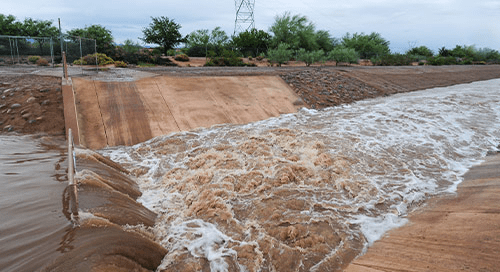When exporting an Autodesk Civil 3D drawing, the process has been generally straight-forward with some well-placed results in Model Space. That caveat adds some steps to an otherwise simple procedure.
First, let us take a look at how this drawing file is set up. There are numerous external references which have Civil 3D entities such as pipe networks, feature lines, alignments, parcels, and surfaces.
It is a typical practice for a need to bind, insert, and explode all external references to the drawing. This need is for sending drawings out to subcontractors or outside contacts that only work with vanilla AutoCAD. Therefore, this employs the requirement to break down all objects to the most primitive entities (lines, polylines, arcs, text, etc.). Navigating to Application Menu > Export > Export Civil 3D Drawing brings up the interface that gives the user control over what, and how, to convert to such a basic file.
I will convert just one of the paper space layouts to illustrate the issue for exporting a plan sheet with external references.
Also, since we want to completely drill down to the simplest of entity types throughout the drawing, choosing Bind, Insert, and Explode seems to be the best option to get us close to it. Bind and Explode would work as well but handles the layer names differently.
Once the export process is complete, inspecting the resulting file allows the user to see what happened to the XREFs. Each XREF is actually converted to a block object but not exploded. So, for each XREF, there is a corresponding anonymously-named block that must be exploded.
Since this anomalous behavior does not occur when the choice is to convert/export the model space only, I would presume this is due to the extra step required to “snapshot” the model space viewport, clip the previous-XREFs to those extents, and copy all paper space objects to model space.
Therefore, explode each block once and the basic geometry should be intact.
It is also a good idea to purge the drawing to rid it of any, and all, block data.
About the Author
Follow on Linkedin More Content by Bryant Quinney






















